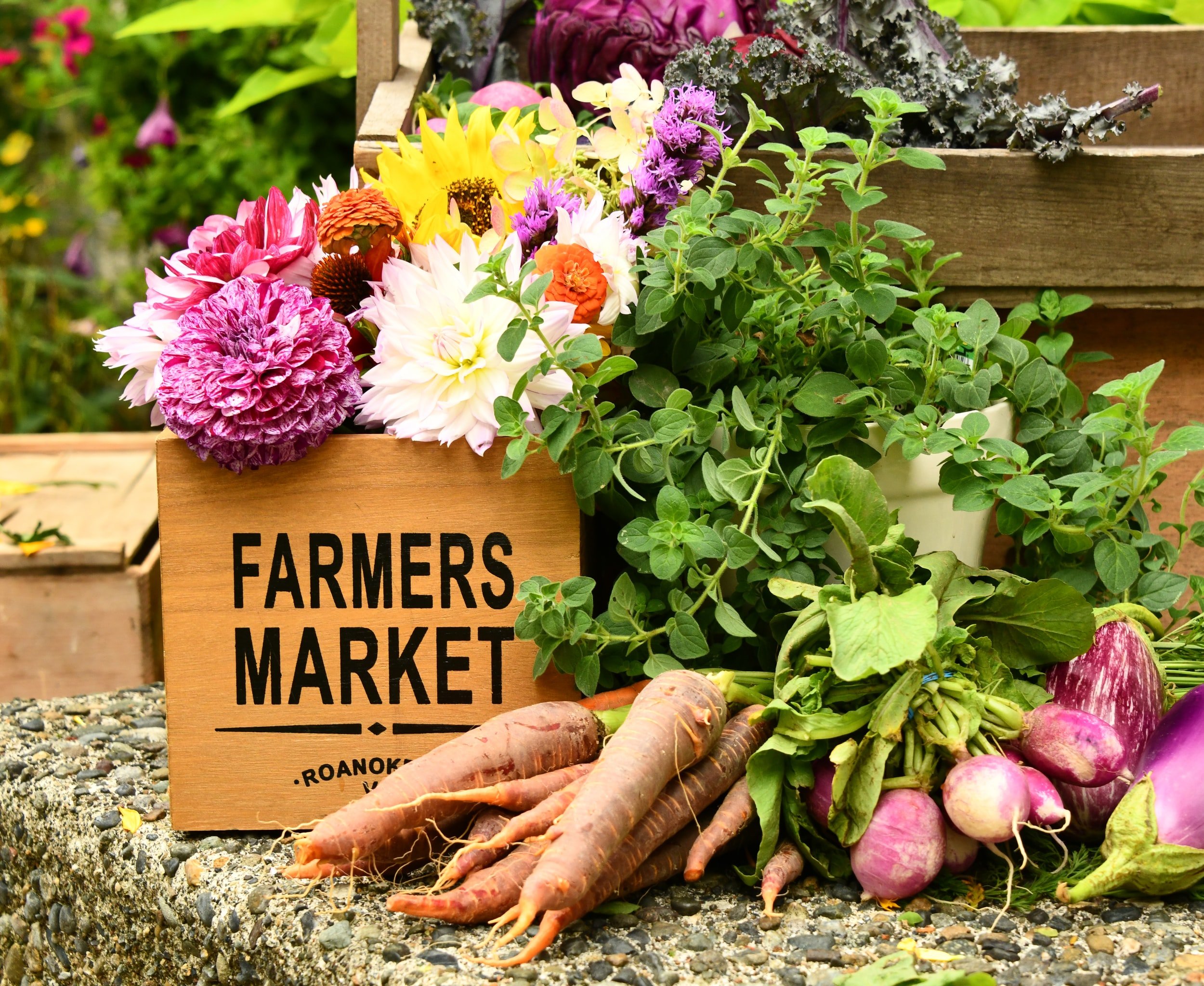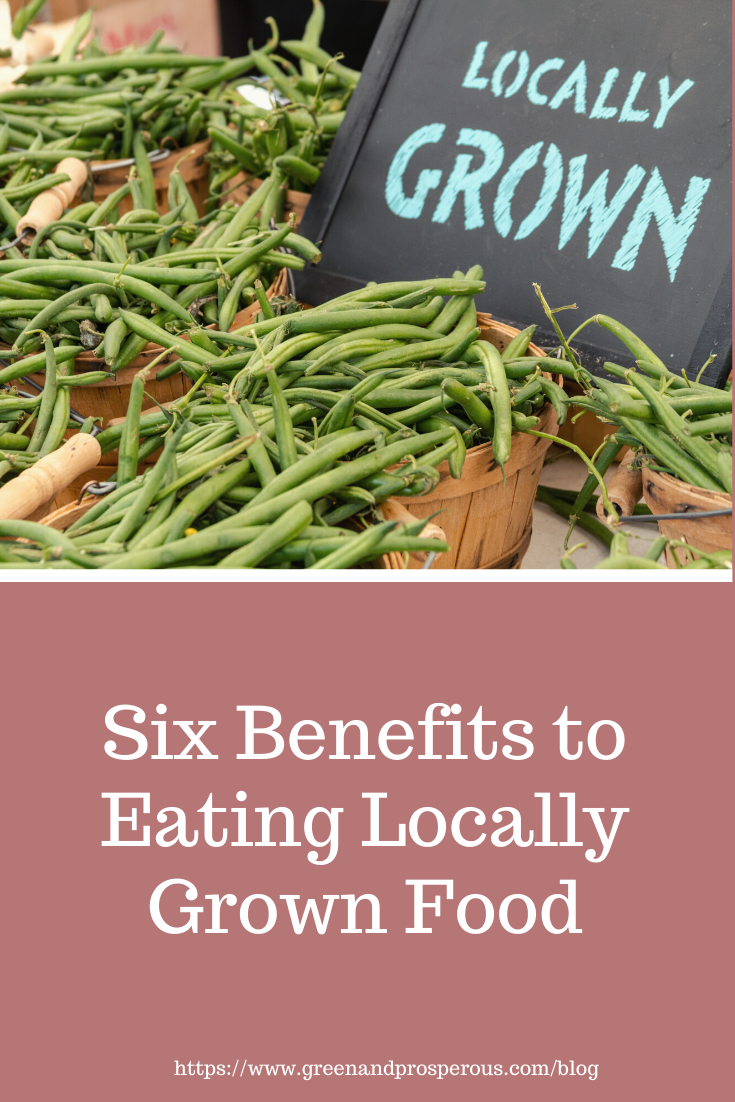Six Benefits to Eating Locally Grown Food
/Spring is well underway in much of the Northern Hemisphere, and many of us are finally able to enjoy time gardening once again. This time of year, there are more farmer’s markets opening up, making it easier to buy freshly-picked food and flowers and chat with local farmers. Aside from the sense of community that visiting or participating in farmer’s markets can help to create, buying food directly from farmers has other benefits, including enabling us to eat seasonally. When you eat fruits and vegetables that are in season, there is less of a need for the farmers that grow those crops to use pesticides on them. Locally produced and distributed fruits and vegetables are growing at a time when they would normally grow, and consequently, farmers don’t have to over-protect them.
There are many other good reasons to buy food directly from your local farmers, including the five discussed below:
Locally grown foods are less likely to be contaminated with toxins.
Mass food production and its long-distance transport also go along with a number of other necessary practices that can compromise the safety of your food supply. Washing, handling, harvesting, shipping, and packaging for mass distribution are all practices that increase the chances that your food will be contaminated by a virus or pathogen that can make you sick or even kill you. The US Food and Drug Administration (FDA) has created a Coordinated Outbreak Response and Evaluation (CORE) Network to manage the response, surveillance and post-response activities related to incidents of foodborne illnesses that have been linked to foods that are regulated by the FDA. The FDA website also contains valuable tips to help protect you from contracting a foodborne illness. In summer, the number of these illnesses peaks, since the bacterial microorganisms that cause them multiply faster in warm weather.
Helps the local economy
It is well known by now that eating locally grown food helps sustain local economies. As Barbara Kingsolver noted in her 2007 book about “good food”, Animal, Vegetable, Miracle: A Year of Food Life, the fastest growing segment of the food economy in the United States consists of the triad – organic farmers, farmers’ markets, and small food producers who grow just outside of the urban areas. Fifteen years later, organic and local food continue to be represented among the fastest growing segments. Buying locally grown foods also creates jobs for local food growers and workers in local food processing and distribution centers. The money that you spend in local economies tends to stay within those economies, boosting farmers’ incomes, and also the revenues of local businesses that are directly and indirectly connected to those farmers.
Locally grown food tastes better and is more nutrient-rich
It’s no secret to anyone who has grown their own fruits or vegetables that they simply taste better when you eat them freshly picked from the vine. It’s also no secret to anyone who has eaten a fruit or vegetable that is out of season in their local area: it often tastes bland, bitter, or just generally inferior. Transporting fruits and vegetables in refrigerated vehicles over thousands of miles to your grocery store not only requires the consumption of enormous amounts of fuel each year, it results in a lower quality of food product. Moreover, harvesting earlier in order to reduce the chances of spoilage during transportation can affect the nutritional value of foods: some foods lose nutritional value when they are picked too early. Although it is true that taste and nutrients are the outcomes of complex and not easily understood phytochemical processes, what we do know is that most produce loses nutrients within 3 days of harvesting. In a 2003 study of the flavonoid and vitamin C values of locally grown mangoes, Dr. Adrian A. Franke at the Cancer Research Center in Hawaii found that local mangoes contained 117% more vitamin C than imported ones, and local Ka’u oranges had 150% more flavonoids than imported navel oranges. Other studies in various locations around the world have demonstrated the same results: locally grown produce tends to retain more of its nutrients than produce that has to be transported great distances.
Eating locally develops community networks
Many local farmers do a lot more than grow delicious fresh food. They also help build and sustain local communities. Small farmers hold workshops and classes on topics related to nutrition, food growing, and preparation. Others help feed low-income families and the poor by donating part of their produce to families that are struggling or in crisis, teach low-income families how to grow some of their own food, or accept WIC and/or SNAP payments. Others operate through local networks or through farm-to-school programs to connect schools with community farmers. Yet most people know little to nothing about their local farmers.
There are many ways to change this.
Partner with your local farmer or join a CSA (Community-Supported Agriculture) to help slash your food bills by buying in bulk, either alone or teaming up with a friend or neighbor. Many local farmers are interested in hearing more from (and seeing more of) their neighbors, and above all, in working to educate them about local offerings on the farm, and the importance of eating locally. While farmers appreciate you buying their wares at the local market, you can also visit farms near you and in many cases, buy direct. By doing this on a regular basis you can make a big difference in your local economy and meet some pretty interesting people who know a lot about good food! It’s important to note, though, that farmers are very busy people, so you shouldn’t show up unannounced. Call ahead and be respectful when you arrive. Here’s one handy guide to help you find local organic farms in your area and make your farm visit mutually satisfying: www.localharvest.org/organic-farms/visiting.html.
Your kids will learn more about where food comes from
Ok, full disclosure: sometimes kids do not care one bit about learning how food is made or where it comes from. In fact, they may be grossed out by worms, bugs, and dirt. Even if that is the case, believe me, kids get something from the experience of visiting a local farm, sitting in a workshop for kids, munching on healthy, freshly picked snacks, and seeing the plants in the ground (and hearing about how you can eat them!). Young kids get more excited when they can actually see that a seed they planted has sprouted up from the ground, or when they get to harvest something and then eat it (props to you moms and dads who are patient enough to actually let your little ones help prepare the food – this will instill in them a lifetime interest in good eating, even if they do enjoy junk food from time to time).
Most kids today are disconnected and unaware of where their food comes from (as are a lot of grownups, too!), so visiting a farm gives them a real sense of things: they can see, feel, smell, and taste food from plant to pot. Some farms even offer lodging where you can pay to stay. While some of these can be pricey, others are very affordable: under $100 a night. The website FarmStayUS lists hundreds of farms, ranches, and vineyards where you can visit and stay. This is especially great for kids growing up in cities where they have little contact with the natural world.
You will be exposed to new foods
Finally, by eating locally grown produce, you’ll be exposed to foods (or varieties of them) you may not have seen or tried before. I first noticed kohlrabi at Eco City Farms in Edmonston, MD and later became such a fan I started growing it myself year-round. I had seen kohlrabi before: it just seemed so strange to me that I avoided it. Talking with the local farmers and interns at the farm, though, and with my younger brother (he’s from a small town in Germany and loves this vegetable – incidentally it’s called “German turnip”) opened me up to trying something I had previously avoided, and now I am a convert. (BTW: the leaves are delicious sautéed with garlic and butter, too!)
While eating locally is not possible for some people for a variety of reasons (lack of transportation, a short growing season in your area), it should be a supplement for most people. It may not be a cure-all for the problems with big agribusiness, but it can go a long way in improving our collective health and strengthening our local communities in the long-term.
Like this? Please pin!








































